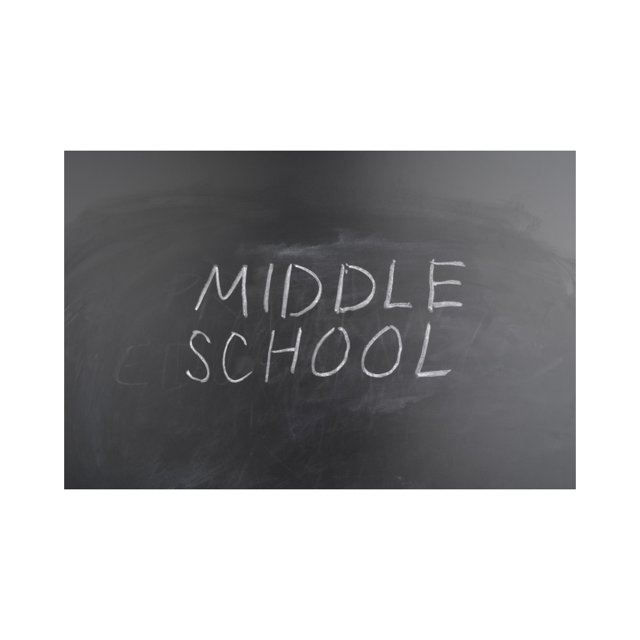The Teaching Files: Why is Middle School the Middle Child?
- Donyel Griffin
- Apr 14, 2022
- 4 min read

Reports come out every so often that remind us that student performance starts to decline after elementary school. Educators note that there seems to be a decline in motivation, test scores, and overall school satisfaction in students. In all fairness, middle school can be fun to teach. They start to understand the world beyond their own experience; they also are still young enough to enjoy games of Kahoot and group competitions for jolly ranchers. So, for anyone who has wondered, "how does anyone teach middle school?", there are bright spots.
But research addresses that something changes between elementary and middle school. The study called Focus on The Wonder Years: Challenges Facing Middle School provides research that attempts to explain the phenomena of student performance decreasing during this transition. It is not that all of a sudden students cease to learn, or that teachers stop teaching.So, what happens?
According to the study, education researchers have questioned for a while whether adolescents are ushered into a new environment too soon. The idea of a "middle school" and a sense of separation is only a few decades old. Many people may recall going to a "junior high". However, there is research that supports a certain model that may be best for students.
A Simmons and Blyth study, "showed that 7th graders in the new school environment were worse off than the same-age peers who remained in the K–8 school."
The findings further suggest that the developmental needs of middle school are a relatively recent concept within the past few decades. It seems as if middle school has been treated like "the middle child" of education. Schools and researchers are aware there is something special this demographic needs but because it is neither the younger nor oldest, there seems to be a lot of confusion about what approach to take. Teaching certification programs have taken note. Some states have started to offer teacher certifications especially for middle grades to address the unique developmental and academic needs of the age group. But, what is it that they need? That is a loaded question but let's address one possible answer.
Reappraising academic and social adversity improves middle school students' academic achievement, behavior and well-being provides an in-depth study of the variables that impact student success. Borman et. al (2019) reports, "Although declining academic engagement in middle school is rooted in developmental and social–organizational challenges, the importance of students’ sense of belonging in these processes provides a potential point of leverage for mitigating these trends." This argues that building Social Emotional Learning curricula such as Developmental Designs into the middle school framework may be even more important for this age group. Though more responsibility is expected, treating middle-school students like mini high-school students does not seem to be the best approach based on research. If socialization is part of the key, what happens academically?
What are some ideas to foster this sense of belonging during a difficult transition period?
1. Advisory is a more intentional, supportive version of homeroom. For example, students answer journal prompts, respond to reflections, and engage in team-building activities with their advisory teacher and class.
2. Smaller class sizes. Unfortunately, not all schools can accommodate the benefits of this model. However, since middle school students feel overwhelmed by the transition, it is best to create smaller communities of learning. Students build confidence and can feel heard and listened to in these environments.
3. Many schools have created Intervention and Referral Services Teams (I&RS). Similar to an IEP meeting where multiple stakeholders engage in the conversation regarding student support, I&RS involves multiple staff members who engage with groups of students. The burden is not just placed on the Social Worker/Counselor to identify students that may need more support. Teachers, leaders, deans, and other staff members are often invited to join grade-level conversations to recommend students and interventions to support students academically, emotionally, mentally, and/or socially.
4. Extra-curricular activities can support students that need support groups after school. Some extra-curricular activities are commonly rooted in activity for more extroverted students. However, this generation is more aware of mental health topics. A trained staff member in counseling skills can facilitate groups that provide access to topics centered around mindfulness, stress, and mental health to address the study body's needs.
5. Guest speakers are effective ways to get students to hear new perspectives. Also, inviting successful high school or college students to speak can be effective because adolescents often feel more of a connection to people who are similar in age or can serve as respected peers.
Middle school can be a very stressful time in terms of social belonging as mentioned above. The tips above only work when schools prioritize safe spaces and that students respect others' experiences. Bullying and teasing are still unfortunately a very serious issue and it further complicated by social media. For students to be open to engaging in reflection, talking about their issues, and partaking in meaningful school activities, schools have to identify how to support the voice and experience of all students.
Comments